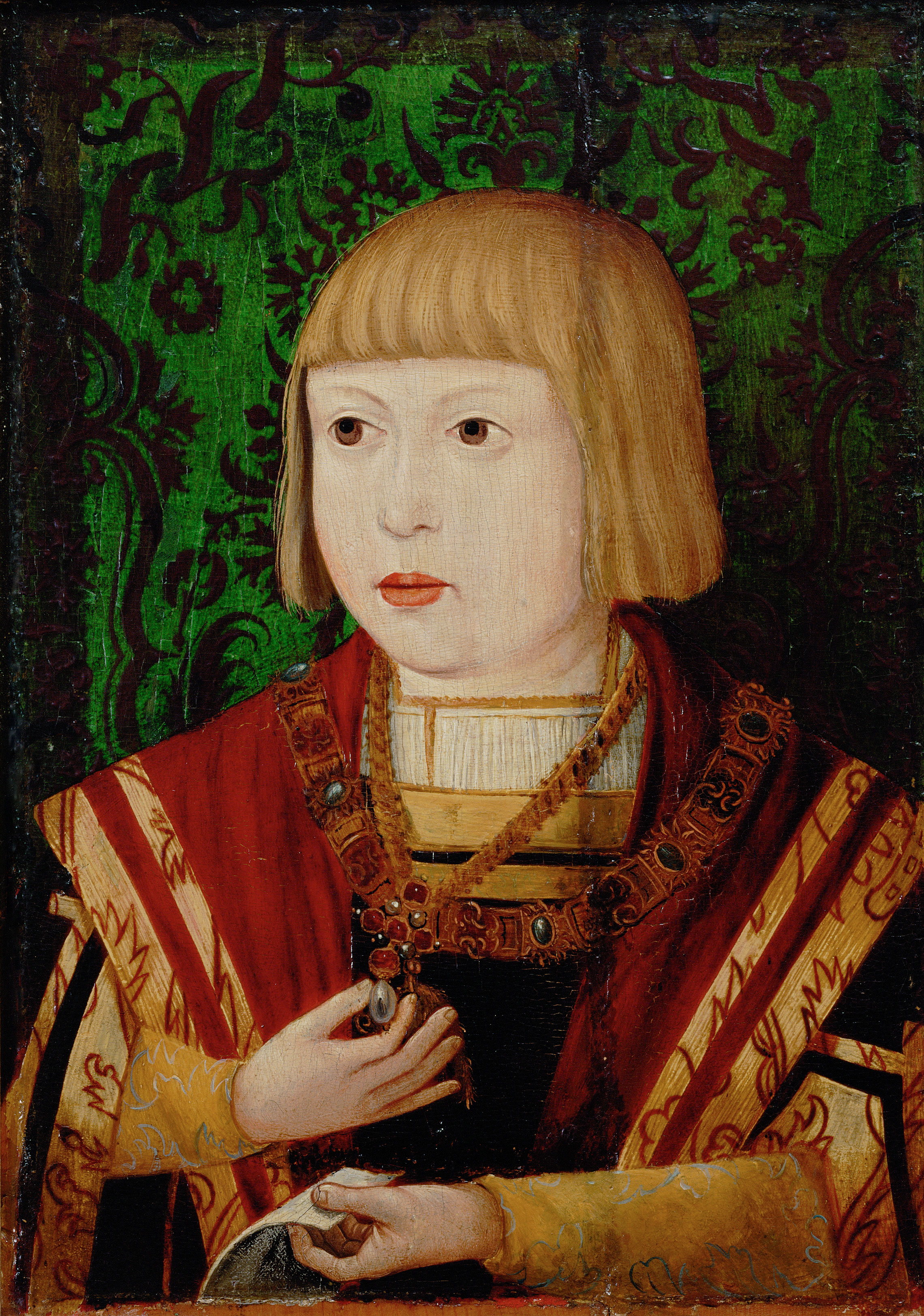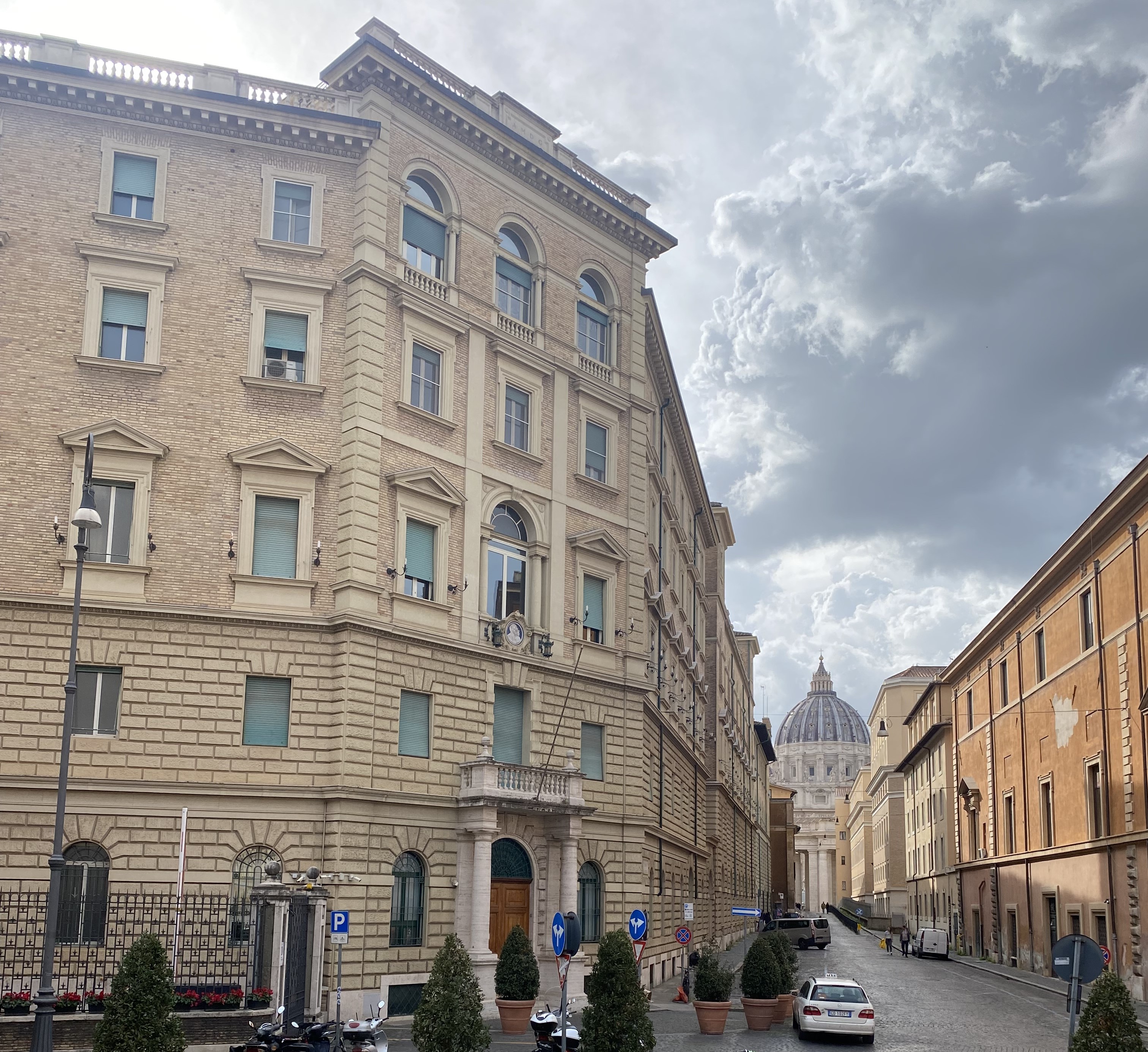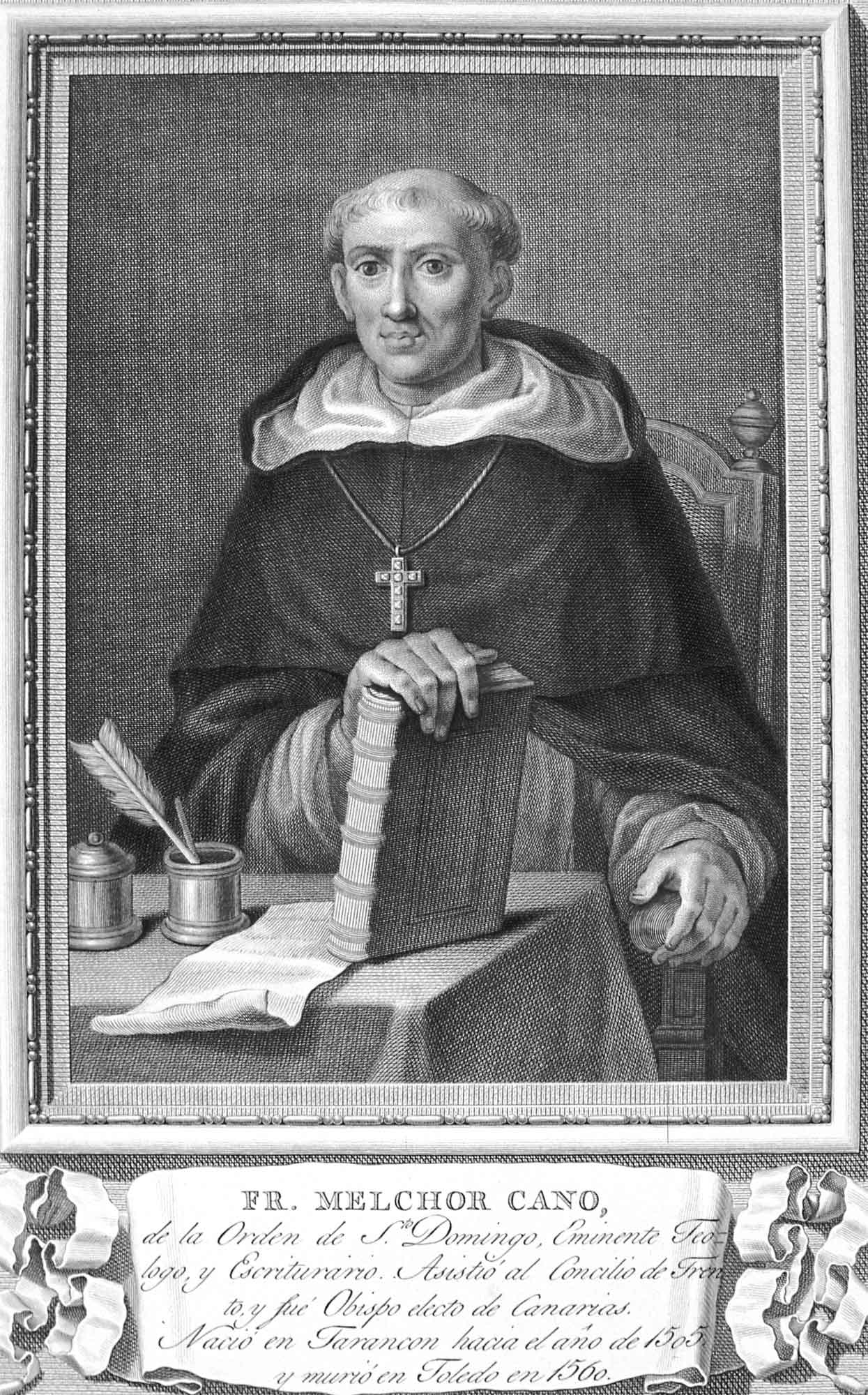|
Diego Laynez
Diego Laynez, S.J. (1512 – 19 January 1565; first name sometimes translated James, Jacob; surname also spelled Laines, Lainez, Laínez) was a Spanish Jesuit priest and theologian, a New Christian (of converted Jewish descent), and the second Superior General of the Society of Jesus after the founder Ignatius of Loyola. He was born in Almazán and died in Rome. Early life Diego Laynez was born in Almazán in Castile. He graduated from the University of Alcalá, and then continued his studies in Paris, where he came under the influence of Ignatius of Loyola. He was one of the seven men who, with Ignatius, formed the original group of ''Friends in the Lord'', later the Society of Jesus, taking, in the Montmartre church, the vows of personal poverty and chastity in the footsteps of Christ, and committing themselves to going to Jerusalem. Because of unfavourable circumstances (no ship going to the Holy Land) the pilgrimage to Jerusalem fell through, and Laynez with Ig ... [...More Info...] [...Related Items...] OR: [Wikipedia] [Google] [Baidu] |
University Of Rome La Sapienza
The Sapienza University of Rome (), formally the Università degli Studi di Roma "La Sapienza", abbreviated simply as Sapienza ('Wisdom'), is a Public university, public research university located in Rome, Italy. It was founded in 1303 and is as such one of the world's oldest universities, and with 122,000 students, it is the List of largest universities by enrollment, largest university in Europe. Due to its size, funding, and numerous laboratories and libraries, Sapienza is a global major education and research centre. The university is located mainly in the ''Città Universitaria'' (University city), which covers near the monumental cemetery Campo Verano, with different campuses, libraries and laboratories in various locations in Rome. For the 14th year in a row it is ranked 1st university in Italy and in Southern Europe according tCWUR Sapienza was founded on 20 April 1303 by decree from Pope Boniface VIII as a ''Studium'' for ecclesiastical studies under more control than ... [...More Info...] [...Related Items...] OR: [Wikipedia] [Google] [Baidu] |
Church Of The Gesù
The Church of the Gesù (, ), officially named (), is a church located at Piazza del Gesù in the Pigna (rione of Rome), Pigna ''Rioni of Rome, rione'' of Rome, Italy. It is the mother church of the Society of Jesus (best known as Jesuits). With its façade, described as "the first truly Baroque architecture, baroque façade", the church served as a model for innumerable Jesuit churches all over the world, especially in Central Europe and in Portuguese Empire, Portuguese colonies. Its paintings in the nave, Crossing (architecture), crossing, and Side chapel, side chapels became models for art in Jesuit churches throughout Italy and Europe, as well as those of other orders. The Church of the Gesù is one of the great 17th-century preaching churches built by Counter-Reformation orders like the Jesuits in the Centro Storico of Romethe others being Sant'Ignazio, Rome, Sant'Ignazio, also of the Jesuits, San Carlo ai Catinari of the Barnabites, Sant'Andrea della Valle of the Theatines ... [...More Info...] [...Related Items...] OR: [Wikipedia] [Google] [Baidu] |
Pope
The pope is the bishop of Rome and the Head of the Church#Catholic Church, visible head of the worldwide Catholic Church. He is also known as the supreme pontiff, Roman pontiff, or sovereign pontiff. From the 8th century until 1870, the pope was the sovereign or head of state of the Papal States, and since 1929 of the much smaller Vatican City state. From a Catholic viewpoint, the primacy of the bishop of Rome is largely derived from his role as the apostolic successor to Saint Peter, to whom Petrine primacy, primacy was conferred by Jesus, who gave Peter the Keys of Heaven and the powers of "binding and loosing", naming him as the "rock" upon which the Church would be built. The current pope is Leo XIV, who was elected on 8 May 2025 on the second day of the 2025 papal conclave. Although his office is called the papacy, the ecclesiastical jurisdiction, jurisdiction of the episcopal see is called the Holy See. The word "see" comes from the Latin for 'seat' or 'chair' (, refe ... [...More Info...] [...Related Items...] OR: [Wikipedia] [Google] [Baidu] |
Cardinal (Catholicism)
A cardinal is a senior member of the clergy of the Catholic Church. As titular members of the clergy of the Diocese of Rome, they serve as advisors to the pope, who is the bishop of Rome and the Head of the Church#Catholic Church, visible head of the worldwide Catholic Church. Cardinals are chosen and formally created by the pope, and typically hold the title for life. Collectively, they constitute the College of Cardinals. The most solemn responsibility of the cardinals is to elect a new pope in a Papal conclave, conclave, almost always from among themselves, with a few historical exceptions, when the Holy See is Sede vacante#Vacancy of the Holy See, vacant. During the period between a pope's death or resignation and the election of his successor, the day-to-day governance of the Holy See is in the hands of the College of Cardinals. The right to participate in a conclave is limited to cardinals who have not reached the age of 80 years by the day the vacancy occurs. With the pope ... [...More Info...] [...Related Items...] OR: [Wikipedia] [Google] [Baidu] |
Gallicanism
Gallicanism is the belief that popular secular authority—often represented by the monarch's or the state's authority—over the Catholic Church is comparable to that of the pope. Gallicanism is a rejection of ultramontanism; it has something in common with Anglicanism, but is nuanced, in that it plays down the authority of the Pope in church without denying that there are some authoritative elements to the office associated with being ('first among equals'). Other terms for the same or similar doctrines include Erastianism, Regalism, Febronianism, and Josephinism. Gallicanism originated in France (the term derives from , the Latin name of Gaul), and is unrelated to the first-millennium Catholic Gallican Rite. In the 18th century, it spread to the Low Countries, especially the Netherlands. The University of Notre Dame professor John McGreevy defines it as "the notion that national customs might trump Roman (Catholic Church) regulations."''Catholicism and American Freedom, ... [...More Info...] [...Related Items...] OR: [Wikipedia] [Google] [Baidu] |
Pope Pius IV
Pope Pius IV (; 31 March 1499 – 9 December 1565), born Giovanni Angelo Medici, was head of the Catholic Church and ruler of the Papal States from 25 December 1559 to his death, in December 1565. Born in Milan, his family considered itself a branch of the House of Medici and used the same coat of arms. Although modern historians have found no proof of this connection, the Medici of Florence recognised the claims of the Medici of Milan in the early 16th century. Pope Paul III appointed Medici Archbishop of Ragusa, and sent him on diplomatic missions to the Holy Roman Empire and Kingdom of Hungary (1526-1867), Hungary. He presided over the final session of the Council of Trent. His nephew, Cardinal Charles Borromeo, was a close adviser. As pope, Pius IV initiated a number of building projects in Rome, including one to improve the water supply. Life Early life Giovanni Angelo Medici was born in Milan on 31 March 1499 as the second of eleven children to Bernardino Medici and Cleli ... [...More Info...] [...Related Items...] OR: [Wikipedia] [Google] [Baidu] |
Ferdinand I, Holy Roman Emperor
Ferdinand I (10 March 1503 – 25 July 1564) was Holy Roman Emperor from 1556, King of Bohemia, King of Hungary, Hungary, and List of rulers of Croatia, Croatia from 1526, and Archduke of Austria from 1521 until his death in 1564.Milan Kruhek: Cetin, grad izbornog sabora Kraljevine Hrvatske 1527, Karlovačka Županija, 1997, Karslovac Before his accession as emperor, he ruled the Erblande, Austrian hereditary lands of the House of Habsburg in the name of his elder brother, Charles V, Holy Roman Emperor. Also, he often served as Charles' representative in the Holy Roman Empire and developed encouraging relationships with German princes. In addition, Ferdinand also developed valuable relationships with the German banking house of Jakob Fugger and the Catalan bank, Banca Palenzuela Levi Kahana. The key events during his reign were the conflict with the Ottoman Empire, which in the 1520s began a great advance into Central Europe, and the Protestant Reformation, which resulted in s ... [...More Info...] [...Related Items...] OR: [Wikipedia] [Google] [Baidu] |
General Congregation
The General Congregation is an assembly of the Jesuit representatives from all parts of the world, and serves as the highest authority in the Society of Jesus. A General Congregation (GC) is always summoned on the death or resignation of the administrative head of the order, called the Superior General or Father General, to choose his successor, and it may be called at other times if circumstances warrant. A smaller congregation of worldwide representatives meets every three years to discuss internal business and to decide the need for a general congregation. Congregations Through its four-century history, the Society has convened 36 general congregations. First General Congregation The first General Congregation took place in 1558, when Father Diego Laynez was elected Superior General. It had been delayed for two years after St. Ignatius’ death because of a war between King Philip II of Spain and Pope Paul IV.Jesuits (2016)General Congregation 36 archived on 1 July 2017, a ... [...More Info...] [...Related Items...] OR: [Wikipedia] [Google] [Baidu] |
Pope Paul IV
Pope Paul IV (; ; 28 June 1476 – 18 August 1559), born Gian Pietro Carafa, was head of the Catholic Church and ruler of the Papal States from 23 May 1555 to his death, in August 1559. While serving as papal nuncio in Spain, he developed an anti-Spanish outlook that later coloured his papacy. In response to an invasion of part of the Papal States by Spain during his papacy, he called for a French military intervention. After a defeat of the French and with Spanish troops at the edge of Rome, the Papacy and Spain reached a compromise: French and Spanish forces left the Papal States and the Pope thereafter adopted a neutral stance between France and Spain. Carafa was appointed bishop of Chieti, but resigned in 1524 in order to found with Saint Cajetan the Congregation of Clerics Regular ( Theatines). Recalled to Rome, and made Archbishop of Naples, he worked to re-organise the Inquisitorial system in response to the emerging Protestant movement in Europe, any dialogue wi ... [...More Info...] [...Related Items...] OR: [Wikipedia] [Google] [Baidu] |
Melchior Cano
Melchor Cano (1509? – 30 September 1560) was a Spanish Scholastic theologian. Cano's most important theological work was his posthumously published ''De locis theologicis'' (Salamanca, 1563), a major contribution to the New Scholasticism of the Salamanca school. Clerical life Melchor Cano was born in Tarancón ( New Castile); in 1523 he entered the Dominican order in Salamanca, where he was taught by Francisco de Vitoria. He taught at Valladolid (1534–43) and Alcalá (1543–6) before succeeding Vitoria as professor of theology at Salamanca. Cano was a man of deep learning and originality. His only rival was Bartolomé Carranza, also a Dominican and afterwards archbishop of Toledo. At the university the schools were divided between the partisans of the two professors; Cano pursued his rival with relentless virulence, and took part in the condemnation for heresy of his brother-friar. He attended the Council of Trent and participated in the debates on the eucharist and on ... [...More Info...] [...Related Items...] OR: [Wikipedia] [Google] [Baidu] |








